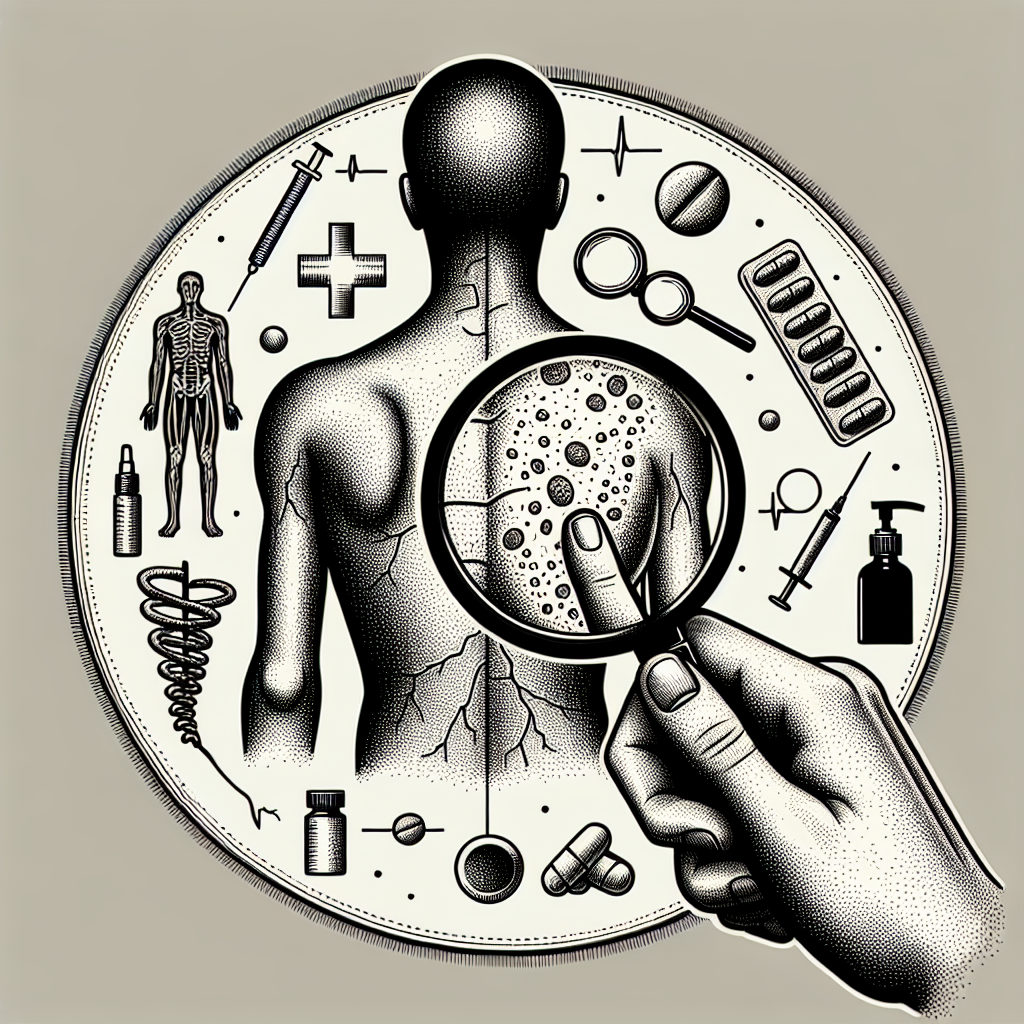What is Shingles?
Shingles is a viral infection that occurs due to the reactivation of the varicella-zoster virus (VZV). This same virus causes chickenpox in children. After recovering from chickenpox, VZV does not leave the body. It takes refuge in nerve ganglia, often near the spinal cord or brain, and remains dormant there for years.
Later in life, the virus can reawaken. This reactivation leads to shingles. The virus then travels along nerve fibers to the skin, causing a characteristic rash. This rash generally appears on only one side of the body, following the path of a nerve. Pain is often the most striking symptom of shingles.
Causes and Risk Factors for Shingles
Aging is the primary risk factor for developing shingles. The immune system naturally weakens with age, making the body less able to keep the VZV virus dormant. Consequently, the majority of cases occur in people over 50.
Several other factors can promote virus reactivation and thus the development of shingles. Immunosuppression, whether due to an illness like HIV/AIDS or medical treatments (chemotherapy, long-term corticosteroids, immunosuppressants after a transplant), increases the risk. Intense emotional or physical stress can also temporarily weaken the immune system and trigger the disease. Chronic fatigue and certain chronic illnesses, such as diabetes, also contribute to an increased risk. People who had chickenpox at a young age, especially before 18 months, may have a slightly higher risk.
Symptoms and Signs of Shingles
Shingles symptoms generally manifest in several stages. The prodromal phase precedes the skin rash. During this period, people often feel tingling, itching, or intense, localized pain on a specific area of the skin. This pain can be dull, throbbing, burning, or aching. Increased sensitivity to touch may also occur in this region. Some may also experience general symptoms such as fever, headaches, and general malaise.
Then, the skin rash appears. It is characterized by red patches and fluid-filled blisters. These lesions generally group together and follow a dermatome, meaning the skin area innervated by a single nerve. The rash is unilateral; it affects only one side of the body and normally does not cross the midline. The most affected areas include the trunk, face (especially around the eye, which requires urgent medical attention as ophthalmic shingles can lead to severe eye complications), and neck. The blisters eventually dry out, form scabs, and disappear within two to four weeks. Unfortunately, the pain, called post-herpetic neuralgia, can persist after the skin lesions have healed.
Diagnosing Shingles: How is it Detected?
Healthcare professionals generally diagnose shingles by observing the characteristic skin rash. The doctor evaluates the appearance of the lesions, their unilateral distribution along a dermatome, and the associated pain. The patient’s medical history, especially if they have previously had chickenpox, provides valuable information for diagnosis.
In atypical cases or when the diagnosis remains uncertain, additional tests can help confirm the presence of the varicella-zoster virus. Fluid may sometimes be sampled from the vesicles to test for VZV by polymerase chain reaction (PCR). This test detects the virus’s genetic material. A viral culture can also be performed, but it is less sensitive than PCR. Early diagnosis of shingles is essential to promptly start antiviral treatment. Rapid treatment helps reduce symptom severity and minimize the risk of complications.
Treatments and Management of Shingles
Shingles treatment aims for several objectives: reducing pain, accelerating lesion healing, and preventing complications. Antiviral medications are the cornerstone of treatment. The doctor generally prescribes them within 72 hours of the onset of the first symptoms for optimal effectiveness. Acyclovir, valacyclovir, and famciclovir are commonly used antivirals. They work by inhibiting virus replication, which reduces the duration and severity of the rash.
Pain management is a crucial aspect of shingles care. Commonly available analgesics, such as acetaminophen or ibuprofen, help control mild to moderate pain. For more intense pain, the doctor may prescribe mild opioids or other medications specifically designed for neuropathic pain, such as gabapentin or pregabalin. Applying cool, moist compresses to the lesions helps relieve itching and discomfort. Keep affected areas clean and dry to prevent secondary bacterial infections. If pain persists after the lesions disappear (post-herpetic neuralgia), specific treatments may be needed, such as lidocaine patches, capsaicin creams, or nerve blocks.
Recent Scientific Advances in Shingles (June 2025)
Shingles research remains very active, although no major breakthroughs were published in the first half of 2025. Efforts are currently focused on optimizing vaccination strategies. Scientists are exploring new vaccine formulations designed to offer more robust protection or simplify vaccination protocols, especially for immunocompromised populations.
Studies are also evaluating the long-term impact of different VZV strains on the risk of post-herpetic neuralgia. This research aims to identify genetic markers or early biomarkers that could predict the severity and persistence of chronic pain. Clinicians thus hope to tailor analgesic treatments more personally. While this work is promising, its clinical application still requires time.
Shingles Prevention: Is it Possible to Reduce the Risk?
Vaccination is the most effective method to prevent shingles and its complications, particularly post-herpetic neuralgia. Two types of vaccines are available: a live attenuated vaccine (which is no longer the first-line vaccine in many countries) and a recombinant vaccine. The recombinant vaccine has superior efficacy and is recommended for people aged 50 and over, whether they have already had shingles or not. This vaccine significantly reduces the risk of developing the disease and, in case of shingles, decreases its severity and the risk of post-herpetic neuralgia.
General measures to strengthen the immune system can also help reduce the risk of virus reactivation. Adopt a healthy lifestyle including a balanced diet, regular physical activity, and adequate sleep. Stress management is also important, as stress weakens immune defenses. Consult a doctor to assess if vaccination is appropriate for you, especially if you have risk factors such as age or immunosuppression.
Living with Shingles
Shingles can be a painful and debilitating experience, but many resources exist to help people better manage the disease. Prompt antiviral treatment significantly reduces the severity and duration of symptoms. Pain management is paramount to improving quality of life during the acute period. Use analgesics recommended by your doctor and explore other relief methods, such as compresses.
In cases of post-herpetic neuralgia, pain can unfortunately persist for months or even years. In these situations, multidisciplinary care involving doctors specializing in chronic pain is often very helpful. Physical therapies, such as physiotherapy or transcutaneous nerve stimulation, can also provide relief. Maintain good hygiene of skin lesions to prevent secondary infections. Psychological support also helps cope with the pain and emotional impact of the disease. Do not hesitate to ask for help from your doctor or support groups.
Frequently Asked Questions (FAQ)
Is shingles contagious?
Shingles is not directly contagious as shingles. A person with shingles cannot transmit shingles to another person. However, the varicella-zoster virus, present in shingles blisters, can be transmitted and cause chickenpox in a person who has never had chickenpox or is not vaccinated. Cover lesions until they are crusted over and avoid contact with non-immune people (children, pregnant women, immunocompromised individuals).
How long does shingles pain last?
Acute shingles pain generally lasts two to four weeks, until the skin rash heals. However, in some cases, pain can persist for months, or even years, after the lesions disappear. This complication is called post-herpetic neuralgia.
Can you get shingles multiple times?
Yes, it is possible to get shingles more than once. Although rare, a recurrence can occur, especially in people with weakened immune systems. Vaccination significantly reduces the risk of recurrence.
Is the shingles vaccine effective?
Yes, the recombinant shingles vaccine is very effective. It reduces the risk of developing shingles by more than 90% in adults aged 50 and over. It also significantly decreases the risk of developing post-herpetic neuralgia.
What are the signs of a shingles complication?
Signs of a shingles complication include intense and persistent pain (post-herpetic neuralgia), a rash that spreads to the eye (ophthalmic shingles), the appearance of high fever, signs of bacterial infection of the lesions (pus, increased redness and warmth), or neurological disorders such as muscle weakness. Consult your doctor immediately if you notice these symptoms.
Additional resources
- To extend your knowledge, more articles are available here.
Confused by your blood test results?
Get instant clarity. AI DiagMe interprets your blood test results online in minutes. Our secure platform translates complex medical data into an easy-to-understand report. Take control of your health today. Visit aidiagme.com to get your personalized insights now.

